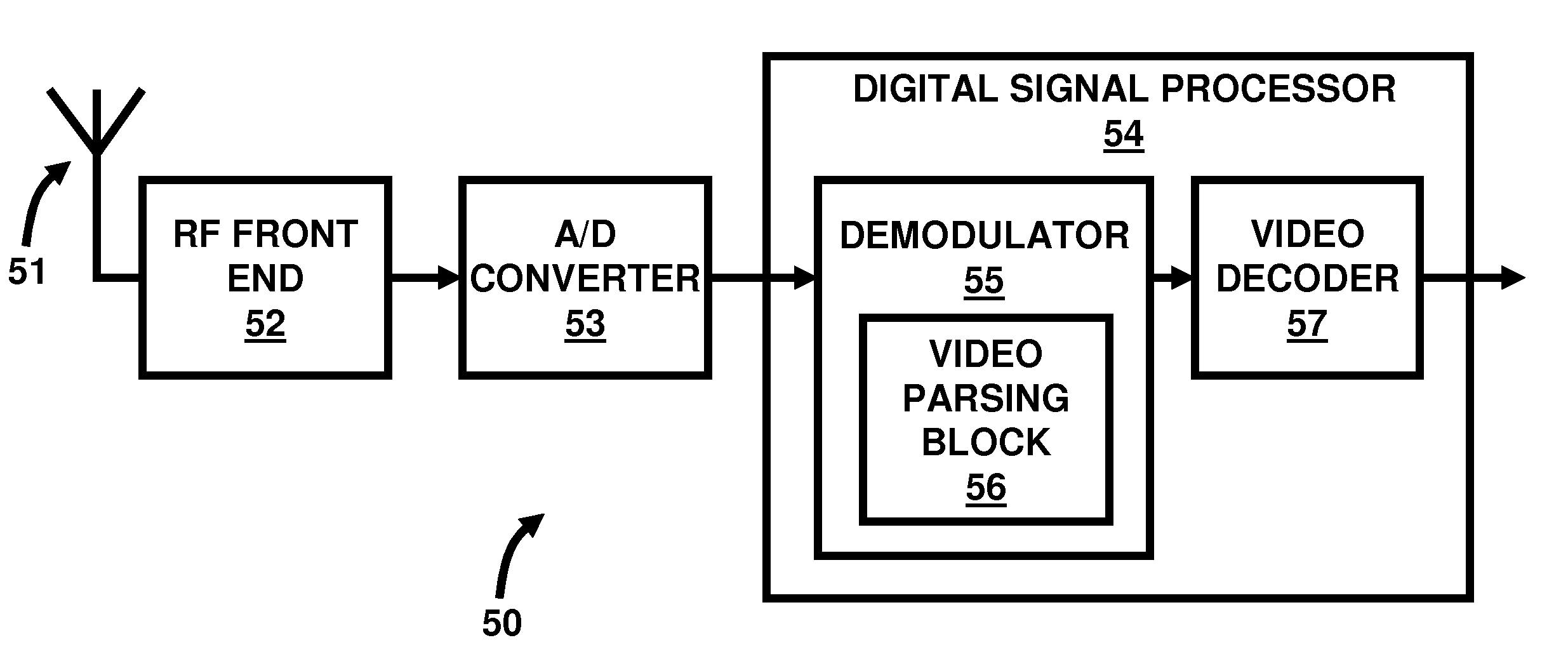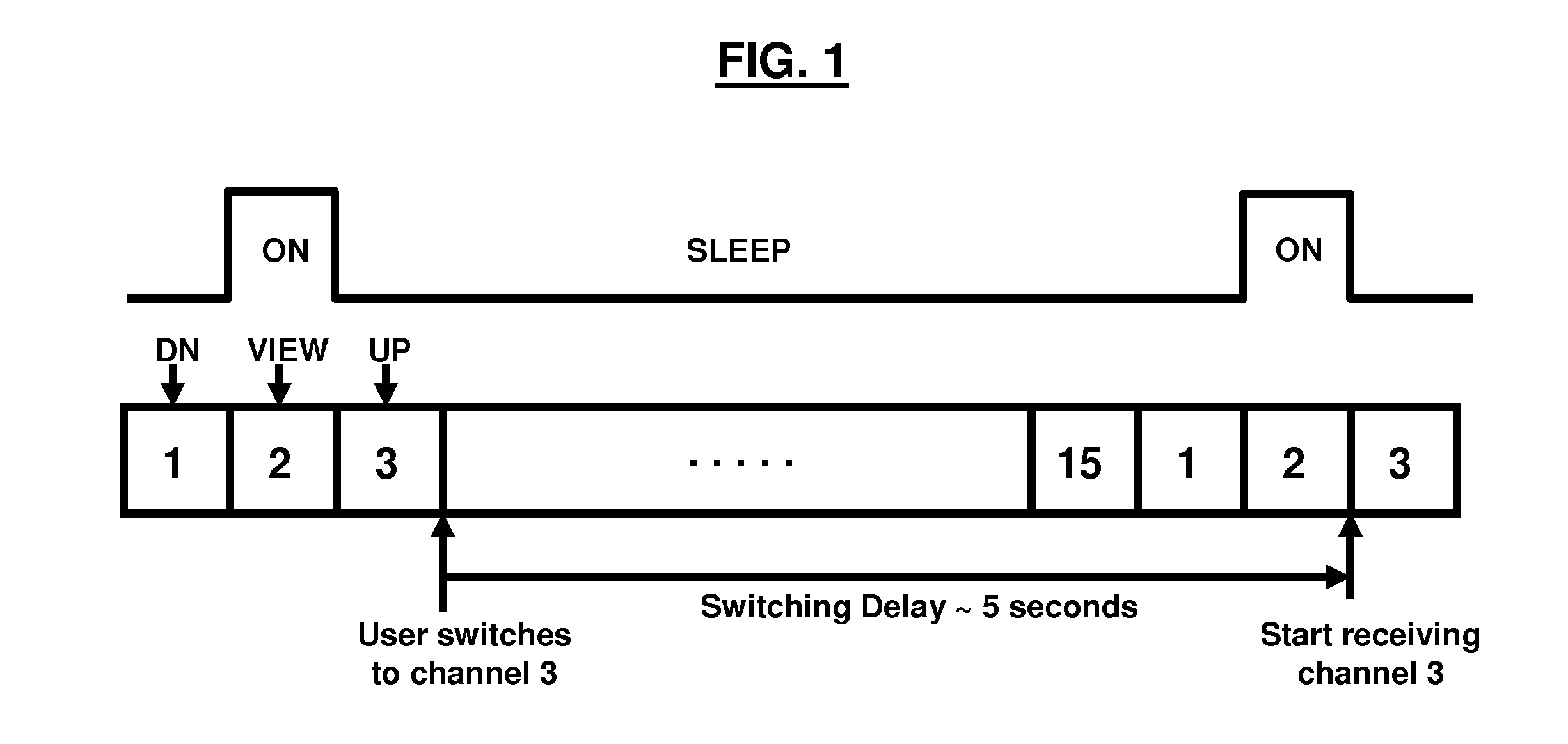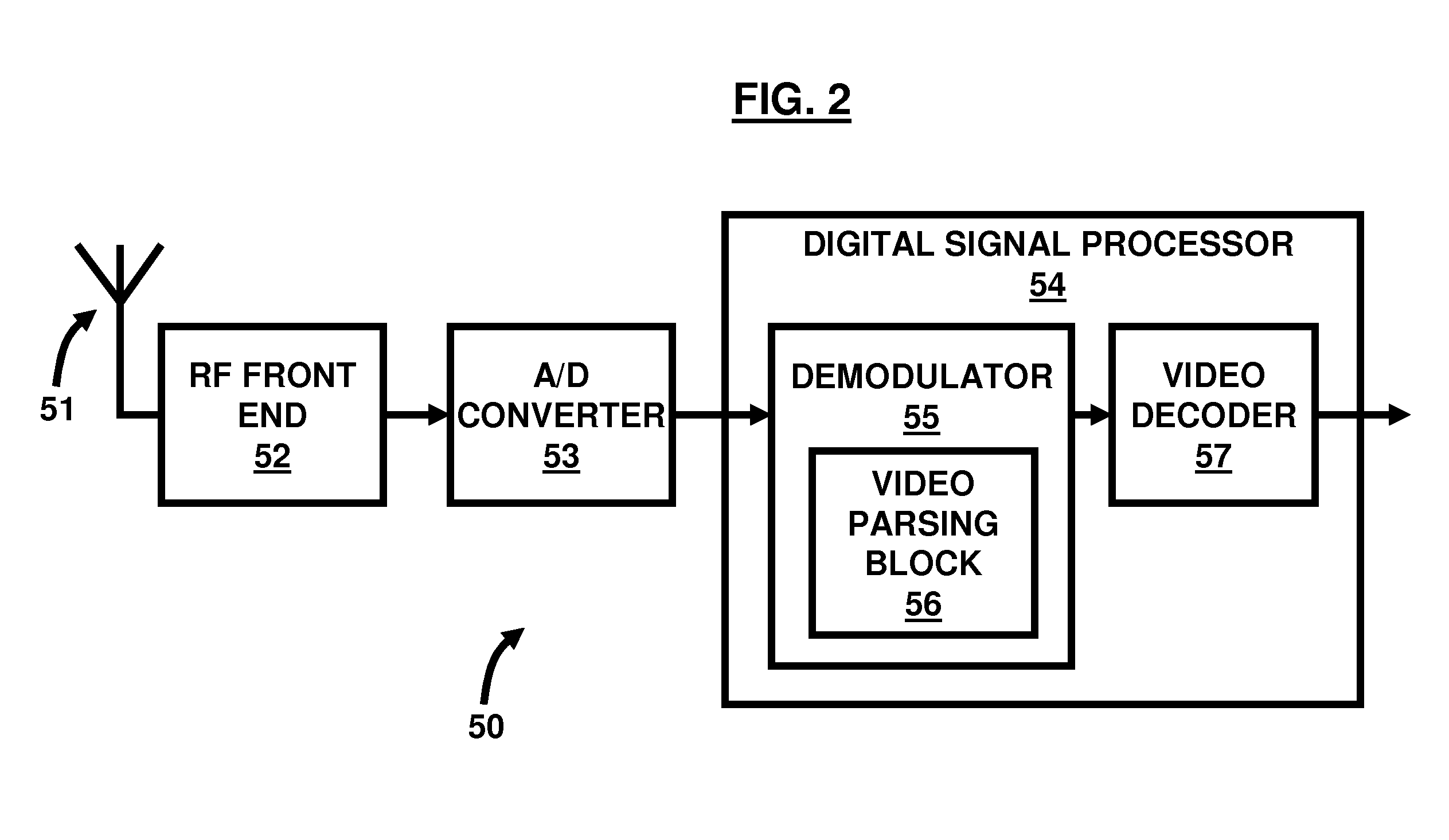A receiver with a visual program guide for mobile television applications and method for creation
a technology of mobile television and program guide, which is applied in the field of mobile television technology, can solve the problems of affecting the quality of the received signal, the size, power consumption, and most importantly the performance of such devices, and the size of the technology has traditionally been limited, so as to reduce the visual resolution level of the parsed video frame, and reduce the power consumption level and memory utilization level
- Summary
- Abstract
- Description
- Claims
- Application Information
AI Technical Summary
Benefits of technology
Problems solved by technology
Method used
Image
Examples
first embodiment
[0025]With respect to FIGS. 2 and 4, in order to create a visual program guide 70, such as the one shown in FIG. 4, one or many of the following embodiments could be used. In a first embodiment, all channels 75 are decoded at the demodulator 55 and passing the decoded channels to the video decoder 57. The video decoder 57 works in a contiguous mode where all channels are decoded and transferred to the video decoder 57. In this embodiment, the video decoder 57 decodes and scales each video channel 75 and creates the visual program guide 70. Preferably, the video decoder 57 has enough processing power and memory to decode multiple channels 75 simultaneously. The processing power needed depends on many factors, such as the implementation of the video decoder 57 itself, the frame rate of the transmitted video, the video encoding profile of the transmitted video, etc. However, in one typical DVB-H RF channel, one could find approximately 15 TV programs or TV channels. Decoding all of the...
second embodiment
[0026]In a second embodiment, the video decoder 57 parses the video of each channel 75 and drops frames of each channel 75 and displays each channel 75 at a lower resolution. The lower resolution depends on how many frames are being dropped. For example, if a typical video is being transmitted at a frame rate of 30 frames / second and the video decoder 57 drops 25 frames / second, then the resulting video resolution would be 5 frames / second. Specifically, the video decoder 57 parses the video of all channels 75 and drops frames of each channel 75 according to the available processing power, whereby each channel 75 is then decoded at a lower frame rate. The processing power needed depends on many factors, such as the implementation of the video decoder 57 itself, the frame rate of the transmitted video, the video encoding profile of the transmitted video, etc. For example, if a specific video decoder 57 decodes 1 TV channel at 30 frames / sec, decoding 15 channels at 5 frames / second would ...
third embodiment
[0027]In a third embodiment, the video decoder 57 parses the video of each channel 75 and drops all frames except the reference frames. Each channel 75 is then decoded at a lower frame rate which is the reference frame rate. Mobile digital TV video frame rates are usually around 20 to 30 frames / second. The reference frame rate is usually around 1 to 5 reference frames / second. The reference frames are much easier to decode as they do not refer to other frames and all information needed to decode them is self-contained. Thus, decoding reference frames do not require high processing power at the video decoder 57. Decoding a reference frame typically requires 20 to 30% (say 25%) of the processing power needed for a non-reference frame. Thus, compared to a specific decoder that decodes 1 TV channel at 30 frames / sec, decoding 15 channels at 5 reference frames / second would require 15 times 5 / 30 times 25 / 100˜0.625 times the processing power.
PUM
 Login to View More
Login to View More Abstract
Description
Claims
Application Information
 Login to View More
Login to View More - R&D
- Intellectual Property
- Life Sciences
- Materials
- Tech Scout
- Unparalleled Data Quality
- Higher Quality Content
- 60% Fewer Hallucinations
Browse by: Latest US Patents, China's latest patents, Technical Efficacy Thesaurus, Application Domain, Technology Topic, Popular Technical Reports.
© 2025 PatSnap. All rights reserved.Legal|Privacy policy|Modern Slavery Act Transparency Statement|Sitemap|About US| Contact US: help@patsnap.com



